Exam Details
Exam Code
:301BExam Name
:BIG-IP Local Traffic Manager (LTM) Specialist: Maintain & TroubleshootCertification
:F5 CertificationsVendor
:F5Total Questions
:209 Q&AsLast Updated
:Mar 30, 2025
F5 F5 Certifications 301B Questions & Answers
-
Question 61:
-- Exhibit

-- Exhibit -Refer to the exhibit.
An LTM device is used to load balance web content over a secure channel.
The developers of the web content have done a trace using an HTTP profiler application. They believe that allowing the LTM device to compress traffic to the client will improve performance. The client can utilize GZIP or deflate compression
algorithms.
An LTM Specialist must implement the compression.
The LTM Specialist has completed the following actions:
1.
Create the relevant profile.
2.
Apply the relevant profile to the virtual server (VS).
After applying the relevant profile, the LTM device is failing to compress the traffic. Instead, the traffic is being served with an error.
What is the problem?
A. The incorrect compression algorithm is applied to the compression profile.
B. The LTM device CANNOT SSL offload the traffic in order to read and compress it.
C. The Protocol Profile (Client) option of "Allow Compression" needs to be enabled.
D. The Protocol Profile (Server) option of "Allow Compression" needs to be enabled.
-
Question 62:
-- Exhibit -
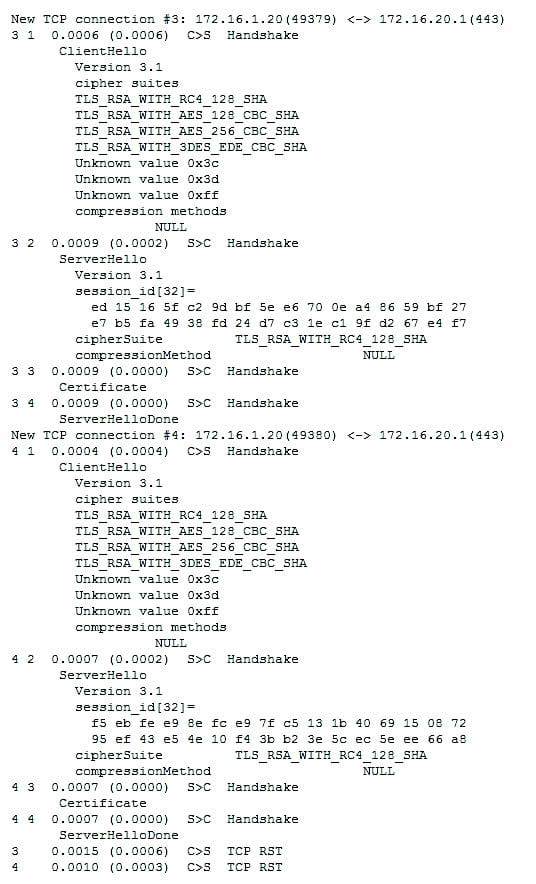
-- Exhibit -Refer to the exhibit. A company uses a complex piece of client software that connects to one or more virtual servers (VS) hosted on an LTM device. The client software is experiencing issues. An LTM Specialist must determine the cause of the problem. The LTM
Specialist has the tcpdump extract. The client loses connection with the LTM device. Where is the reset originating?
A. the local switch
B. the application server
C. the device initiating the connection D. the destination device of the initial connection
-
Question 63:
-- Exhibit -
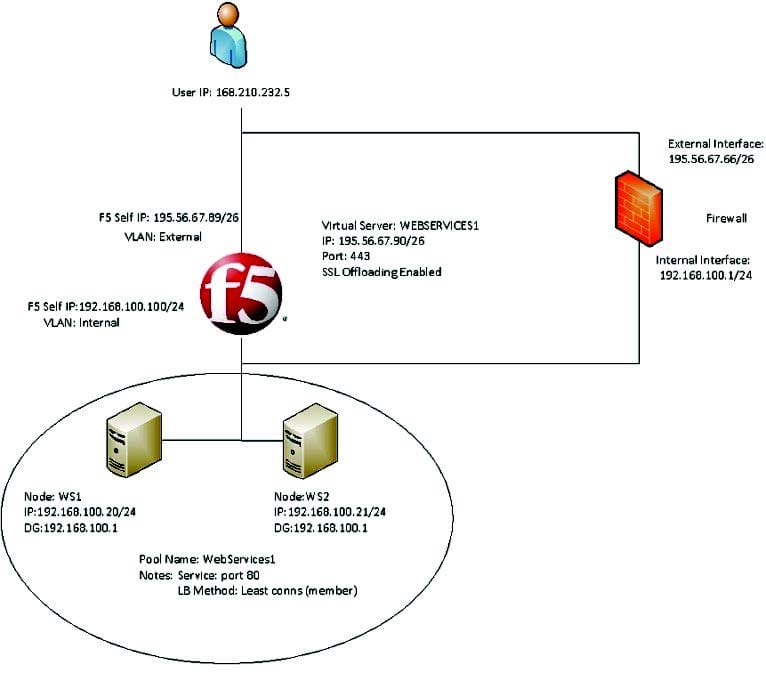
-- Exhibit -Refer to the exhibit.
A company uses a complex piece of client software that connects to one or more virtual servers (VS) hosted on an LTM device. The client software is experiencing issues. An LTM Specialist must determine the cause of the problem.
The LTM Specialist is seeing a client source IP of 168.210.232.5 in the tcpdump. However, the client source IP is actually 10.123.17.12.
Why does the IP address of 10.123.17.12 fail to appear in the tcpdump?
A. The LTM device performed NAT on the individual's IP address.
B. The Secure Network Address Translation (SNAT) pool on the virtual server is activated.
C. Network Address Translation (NAT) has occurred in the path between the client and the LTM device.
D. The individual's data stream is being routed to the LTM device by a means other than the default route.
-
Question 64:
-- Exhibit
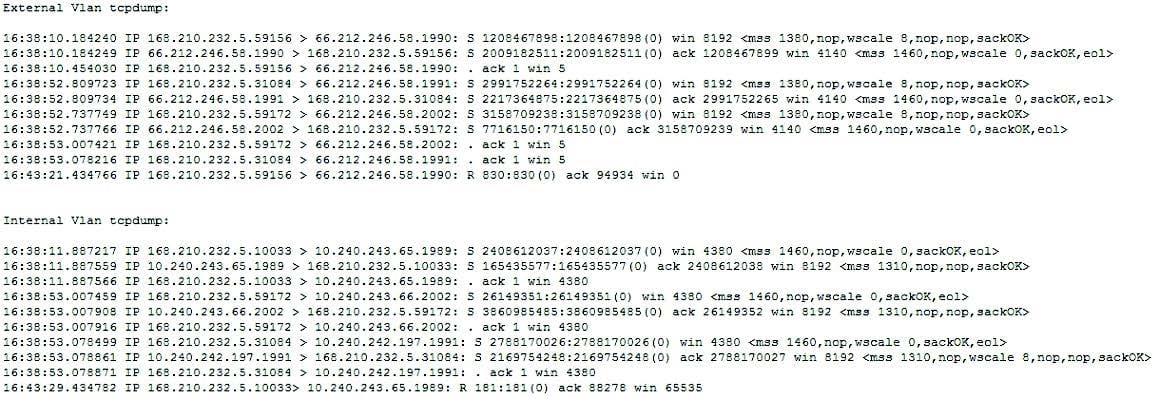
-- Exhibit -Refer to the exhibit.
A company uses a complex piece of client software that connects to one or more virtual servers (VS) hosted on an LTM device. The client software is experiencing issues. An LTM Specialist is tasked with finding the cause of the problem.
The LTM Specialist has the tcpdump extract and knows the client software has at least one connection to a VS on port 1990. However, when a tcpdump runs on the internal VLAN, there is no record of port 1990 in the tcpdump.
Why is there no record of port 1990 in the tcpdump?
A. The LTM device drops the connection.
B. Port 1990 is a well-known port, so its use is restricted.
C. The LTM device performs a Port Address Translation (PAT).
D. The LTM device performs a Network Address Translation (NAT).
-
Question 65:
-- Exhibit
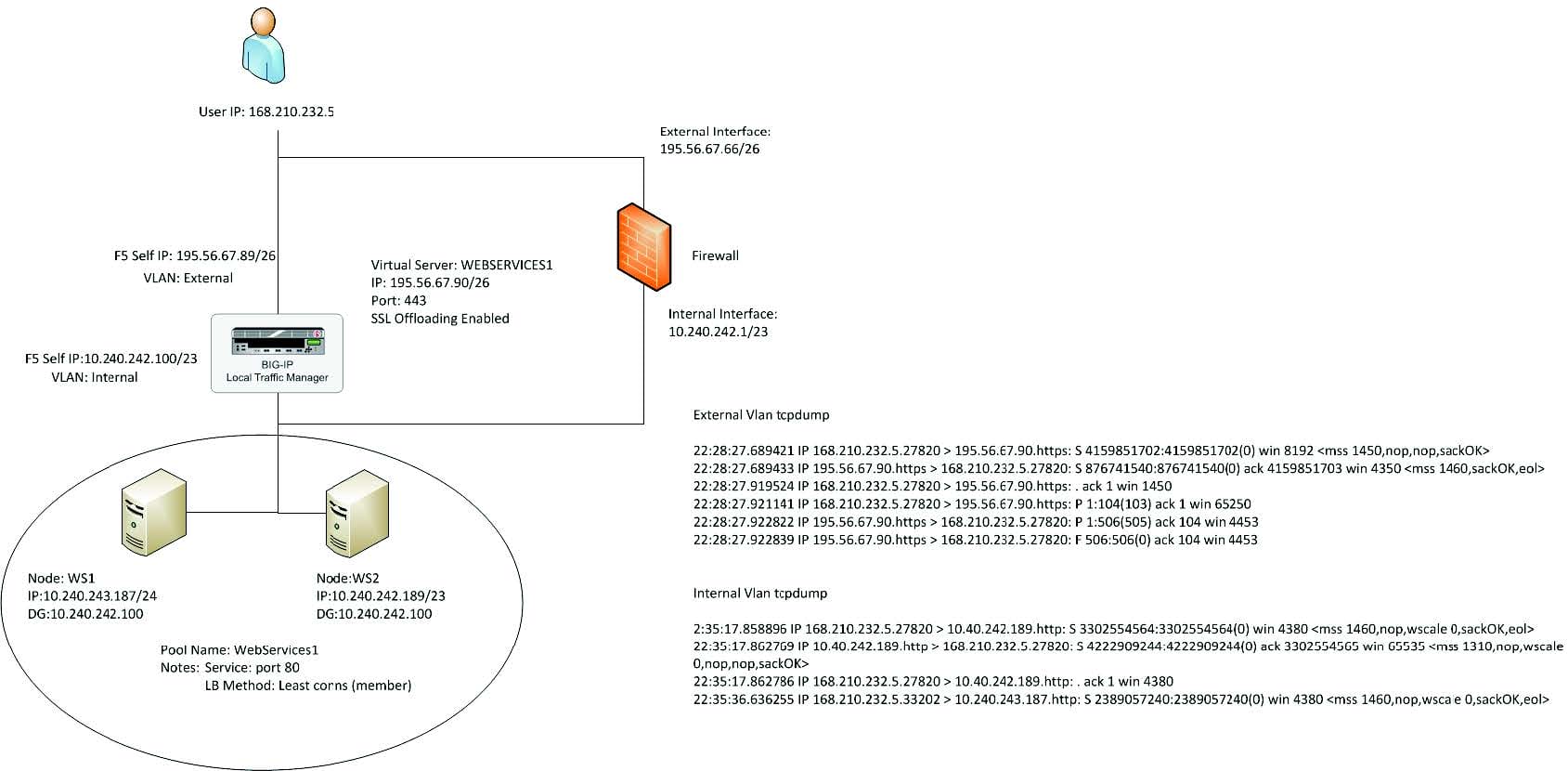
-- Exhibit -Refer to the exhibit.
An LTM Specialist has a virtual server set up on the LTM device as per the exhibit. The LTM Specialist receives reports of intermittent issues. Some clients are connecting fine while others are failing to connect.
The LTM Specialist does a tcpdump on the relevant interfaces, with the following results extracted:
What is causing the intermittent issues?
A. The firewall is dropping the packets from WS1.
B. The default gateway is inaccessible from WS1.
C. The load balancing (LB) method is inappropriate.
D. The pool members have been set up as an active/standby pair, with WS1 as the standby.
-
Question 66:
-- Exhibit
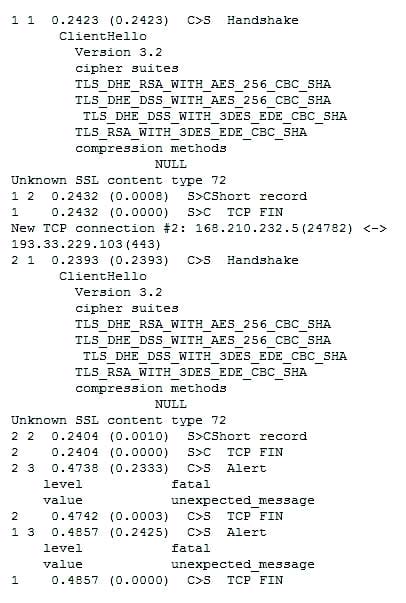
-- Exhibit -Refer to the exhibit. A client attempts to connect from a Google Chrome browser to a virtual server on a BIG-IP LTM. The virtual server is SSL Offloaded. When the client connects, the client receives an SSL error. After trying Mozilla Firefox and Internet Explorer
browsers, the client still receives the same errors.
The LTM Specialist does an ssldump on the virtual server and receives the results as per the exhibit.
What is the problem?
A. The SSL key length is incorrect.
B. The BIG-IP LTM is NOT serving a certificate.
C. The BIG-IP LTM is NOT listening on port 443.
D. The client needs to be upgraded to the appropriate cipher-suite.
-
Question 67:
-- Exhibit

-- Exhibit -Refer to the exhibit.
Which step should an LTM Specialist take next to finish upgrading to HD1.3?
A. Install image to HD1.3
B. Install hotfix to HD1.3
C. Activate HD1.3
D. Relicense HD1.3
-
Question 68:
-- Exhibit -- Exhibit -

Refer to the exhibit.
Users receive an error when attempting to connect to the website https://website.com. The website has a DNS record of 195.56.67.90. The upstream ISP has confirmed that there is nothing wrong with the routing between the user and the
LTM device.
The following tcpdump outputs have been captured:
External Vlan, filtered on IP 168.210.232.5
00:25:07.598519 IP 168.210.232.5.33159 > 195.56.67.90.https: S 1920647964:1920647964(0) win 8192
00:25:07.598537 IP 195.56.67.90.https > 168.210.232.5.33159: S 2690691360:2690691360(0) ack 1920647965 win 4350
00:25:07.598851 IP 168.210.232.5.33160 > 195.56.67.90.https: S 2763858764:2763858764(0) win 8192
00:25:07.598858 IP 195.56.67.90.https > 168.210.232.5.33160: S 1905576176:1905576176(0) ack 2763858765 win 4350
Internal Vlan, filtered on IP 168.210.232.5
00:31:46.171124 IP 168.210.232.5.33202 > 192.168.100.20.http: S 2389057240:2389057240(0) win 4380
What is the problem?
A. The filters on the tcpdumps are incorrect.
B. The DNS entry for website.com is incorrect.
C. The virtual server 'WEBSERVICES1' is listening on the incorrect port.
D. The firewall is dropping the connection coming from the pool members returned to the client.
E. The subnet masks of the pool members of pool WebServices1 and the f5 'Internal' Vlan are incorrect.
-
Question 69:
-- Exhibit -- Exhibit -
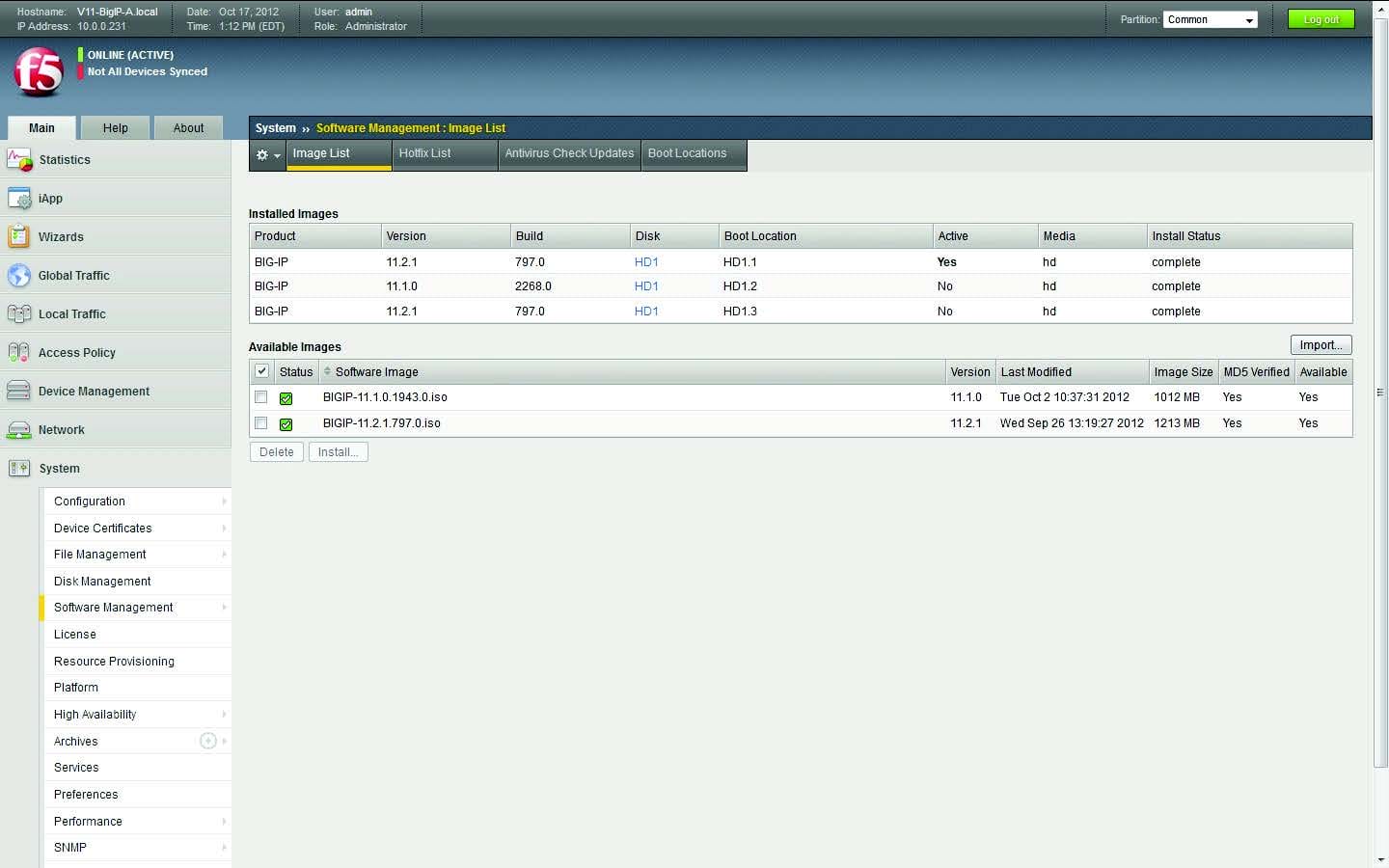
Refer to the exhibit.
An LTM Specialist has uploaded a qkview to F5 iHealth.
Within the GUI, what is the correct procedure to comply with the recommendation shown in the exhibit?
A. Obtain product version image from release.f5.com. Overwrite existing image with new product version image. Select product version image and click Install. Select the available disk and volume set name.
B. Obtain product version image from images.f5.com. Overwrite existing image with new product version image. Select product version image and click Install. Select the available disk and volume set name.
C. Obtain product version image from downloads.f5.com. Import product version image. Install image onto BIG-IP platform. Select product version image and click Install. Select the available disk and volume set name.
D. Log a call requesting the product version image via websupport.f5.com Import product version image. Install image onto BIG-IP platform. Select product version image and click Install. Select the available disk and volume set name.
-
Question 70:
-- Exhibit

-- Exhibit -Refer to the exhibit.
An LTM Specialist is working on an LTM 11.0.0 installation and has identified a security vulnerability as shown in the exhibit. The LTM Specialist is tasked with applying the latest available hotfix to resolve the problem.
Which procedure resolves the problem?
A. Browse to System > Software Management > Hotfix List. Import TMOS 11.2.0 to the available hotfix images. Select the imported hotfix image and installation location and click Install.
B. Browse to System > Software Management > Hotfix List. Import 11.1.0.HF3 to the available hotfix images. Select the imported hotfix image and installation location and click Install.
C. Browse to System > Software Management > Image List. Import TMOS 11.2.0 to the available hotfix images. Select the imported hotfix image and installation location and click Install.
D. Browse to System > Software Management > Image List. Import 11.1.0.HF3 to the available hotfix images. Select the imported hotfix image and installation location and click Install.
Related Exams:
101
Application Delivery Fundamentals201
TMOS Administration301A
BIG-IP LTM Specialist: Architect, Set up and Deploy301B
BIG-IP Local Traffic Manager (LTM) Specialist: Maintain & Troubleshoot771-101
Application Delivery FundamentalsF50-506
F5 FirePass 600 V5F50-531
BIG-IP v10.x LTM Essentials V10.xF50-536
BIG-IP ASM v10.x
Tips on How to Prepare for the Exams
Nowadays, the certification exams become more and more important and required by more and more enterprises when applying for a job. But how to prepare for the exam effectively? How to prepare for the exam in a short time with less efforts? How to get a ideal result and how to find the most reliable resources? Here on Vcedump.com, you will find all the answers. Vcedump.com provide not only F5 exam questions, answers and explanations but also complete assistance on your exam preparation and certification application. If you are confused on your 301B exam preparations and F5 certification application, do not hesitate to visit our Vcedump.com to find your solutions here.